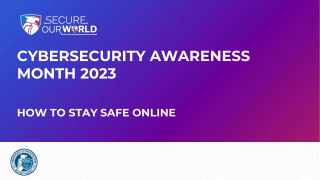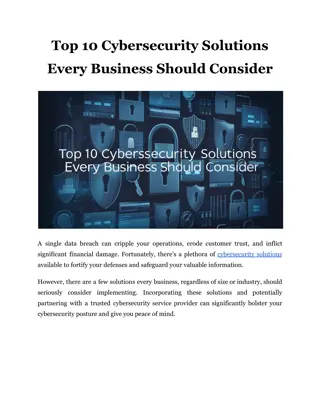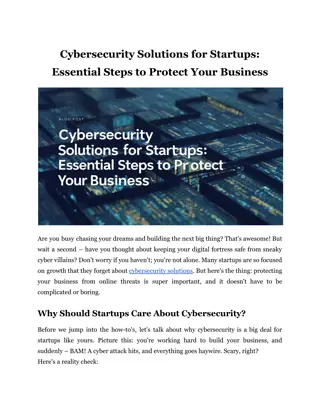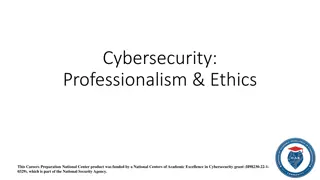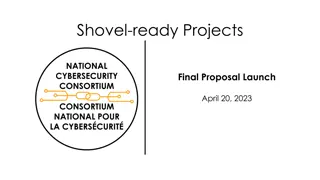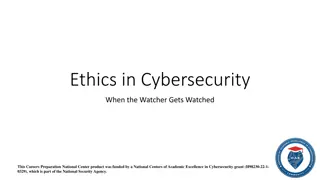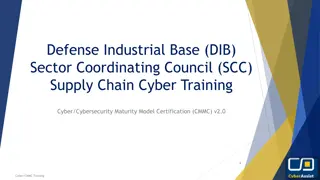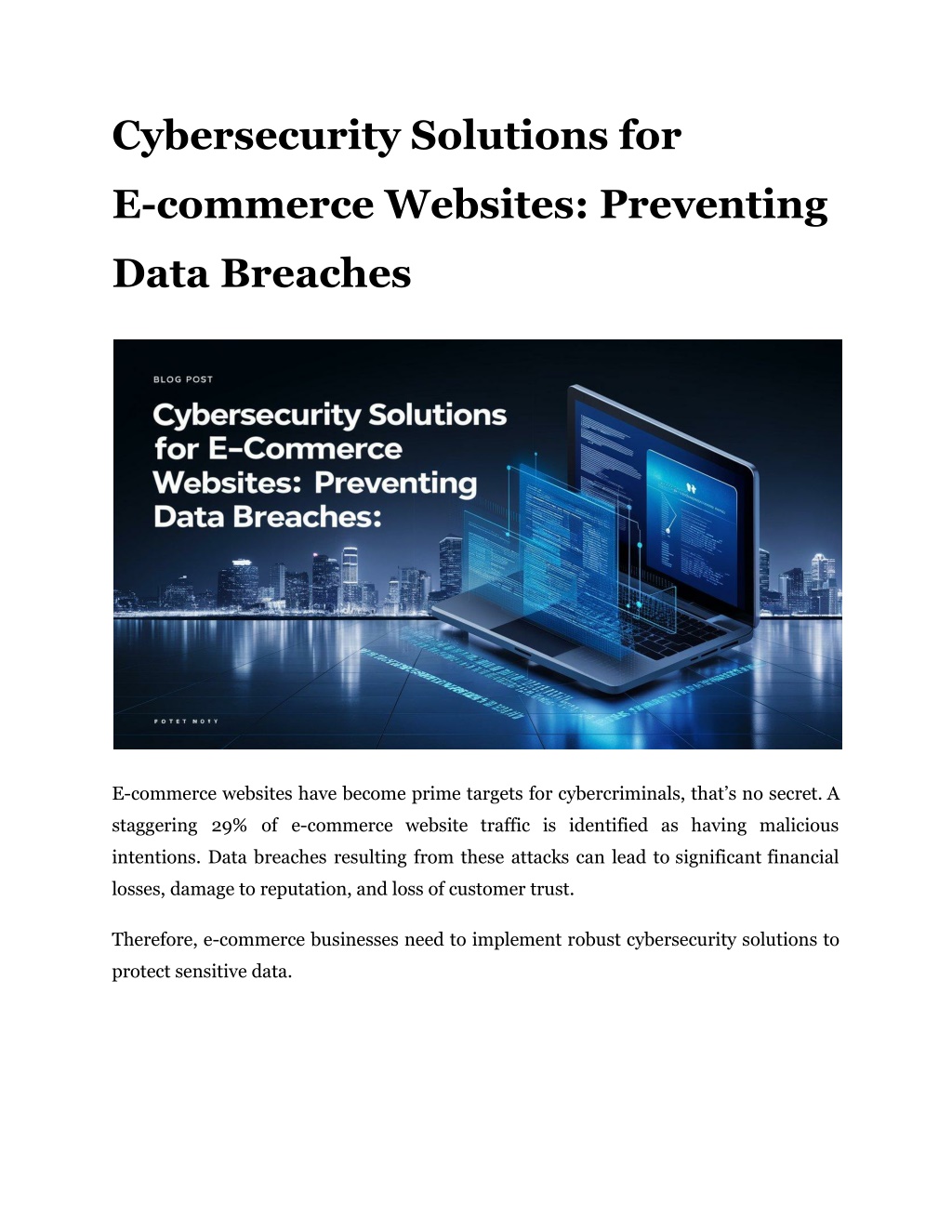
Cybersecurity Solutions for Startups: Essential Steps to Protect Your Business
Discover key cybersecurity steps to protect your startup from online threats. Ensure your business stays secure.n
Download Presentation

Please find below an Image/Link to download the presentation.
The content on the website is provided AS IS for your information and personal use only. It may not be sold, licensed, or shared on other websites without obtaining consent from the author. Download presentation by click this link. If you encounter any issues during the download, it is possible that the publisher has removed the file from their server.
E N D
Presentation Transcript
Cybersecurity Solutions for E-commerce Websites: Preventing Data Breaches E-commerce websites have become prime targets for cybercriminals, that s no secret. A staggering 29% of e-commerce website traffic is identified as having malicious intentions. Data breaches resulting from these attacks can lead to significant financial losses, damage to reputation, and loss of customer trust. Therefore, e-commerce businesses need to implement robust cybersecurity solutions to protect sensitive data.
The Importance of Cybersecurity in E-commerce E-commerce sites are attractive targets for cybercriminals due to the sensitive nature of the data they handle, including personal information, payment details, and transaction histories. According to a 2022 report, the average cost of a data breach reached $4.35 million, with businesses taking an average of 207 days to identify and 70 days to contain a breach. The consequences of a data breach extend beyond financial losses; they can severely damage a company's reputation and erode customer trust. Key Cybersecurity Threats Facing E-commerce Websites Phishing Attacks: Phishing remains one of the most common attack vectors, where cybercriminals use deceptive emails or messages to trick users into revealing sensitive information. E-Skimming: This involves the insertion of malicious code into e-commerce checkout pages to capture payment information in real time. Cybercriminals typically gain access through phishing or exploiting vulnerabilities in third-party services. Malware: Malware can infect e-commerce platforms, leading to data theft, unauthorized access, and significant operational disruptions. Internal Threats: Not all threats come from external sources. Employee negligence and intentional sabotage can also compromise security. Regular training and strict access controls are essential to mitigate these risks. Read More Article: How Do I Choose an Office Cleaning Service in NYC?
Best Practices for Cybersecurity in E-commerce Conduct Regular Network Security Audits A Network Security Audit Toronto can help identify vulnerabilities in your e-commerce platform. This process involves a comprehensive assessment of your network infrastructure, applications, and security protocols to uncover potential weaknesses. Implement Strong Access Controls Access to sensitive information should be restricted to authorized personnel only. Employing the principle of least privilege guarantees that employees have access only to the data necessary for their roles. This approach significantly reduces the risk of internal breaches. Strong Password Policies: Encourage the use of complex passwords and regular updates. Multi-Factor Authentication (MFA): Implementing MFA adds an extra layer of security, requiring users to provide two or more verification factors to gain access. Secure Payment Processing Utilizing secure payment gateways protects customer financial information. Ensure that your e-commerce platform uses: SSL Encryption: Secure Sockets Layer (SSL) encrypts data transmitted between the server and the user's browser. This is critical for privacy and data integrity. PCI DSS Compliance: Adhering to the Payment Card Industry Data Security Standard (PCI DSS) is essential for any business that processes, stores, or transmits credit card information. Compliance helps mitigate the risks associated with handling sensitive payment data.
Regular Software Updates and Patch Management Keeping software and systems updated is vital for protecting against known vulnerabilities. Regularly applying security patches and updates can prevent cybercriminals from exploiting outdated software. Data Minimization Collecting only the essential customer information reduces the amount of sensitive data at risk. Evaluate the necessity of each data point collected and eliminate any unnecessary data storage. Employee Training and Awareness Human error is often a significant factor in data breaches. Regular training sessions on best practices can help employees recognize phishing attempts, understand the importance of data protection, and follow established security protocols. You can even get a good Canadian cyber security company that has expertise on the matter to do it for you. A Few More Ideas Backup and Disaster Recovery Implement regular data backups to protect against data loss due to cyberattacks or other incidents. Store backups securely off-site to prevent data loss in case of physical damage. Develop a comprehensive disaster recovery plan to restore operations quickly in case of a breach. Continuous Monitoring and Threat Intelligence Utilize advanced threat intelligence tools to stay informed about emerging cyber threats.
Monitor your website and network for signs of suspicious activity. Implement intrusion detection systems to detect and respond to attacks in real time. Read More Article: Caspar Barlaeus: The Scholar Behind 'Rerum Per Octennium' Cybersecurity Services for E-commerce Websites Engaging with cybersecurity services can provide e-commerce businesses with the expertise and tools necessary to safeguard their operations. Here are some key services to consider: Vulnerability Assessments: Regular assessments can identify weaknesses in your e-commerce platform and recommend appropriate remediation strategies. Incident Response Planning: Developing a robust incident response plan ensures that your business can react swiftly and effectively in the event of a data breach. Continuous Monitoring: Implementing monitoring tools can detect unusual activity patterns that may indicate a breach, allowing for immediate action to mitigate potential damage. Data Backup Solutions: Regularly backing up data and storing it securely can minimize the impact of a breach, ensuring that your business can recover quickly. Say Yes To Cybersecurity Safeguarding your e-commerce website from cyberattacks requires a multi-faceted approach. It is also an ongoing process that requires constant attention and updates. If you're looking to enhance the cybersecurity of your e-commerce website, consider IT-Solutions.CA. With expert guidance and tailored solutions, you can safeguard your business and customer data against the ever-growing threat of cyberattacks.
Don't wait for a breach to occur before taking action. Protect your e-commerce website today and lock in the trust and loyalty of your customers for years to come. Site Article: Cybersecurity Solutions for E-commerce Websites: Preventing Data Breaches

